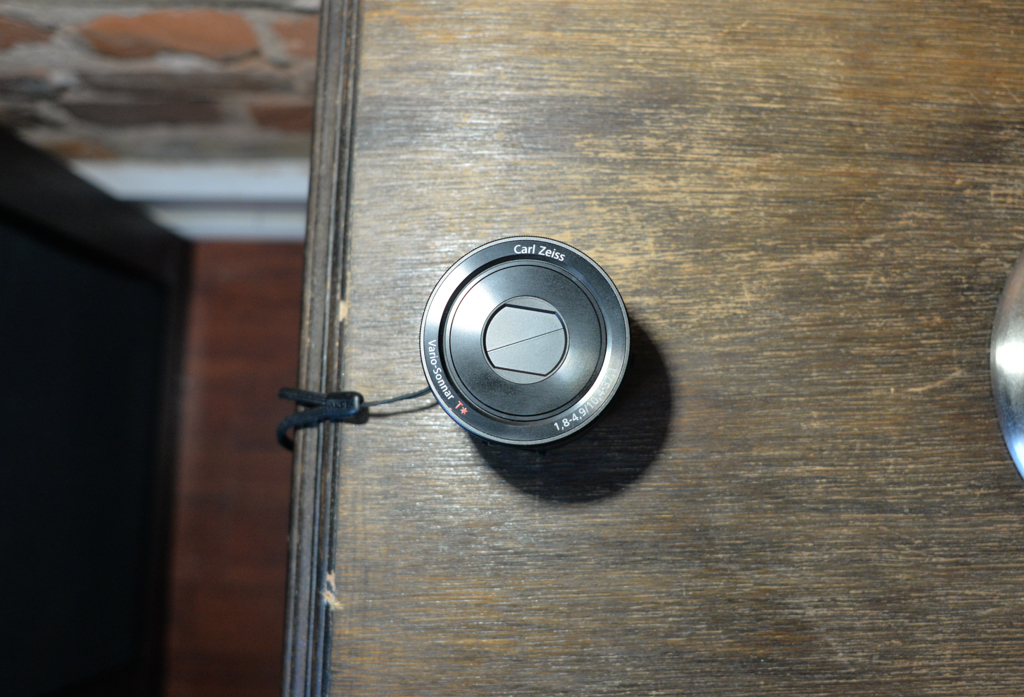
It takes a lot for a product to surprise me. But being thoroughly engrossed in technology’s constant dance makes it especially satisfying when I am.
Sony’s DSC-QX100 camera did that for me. The notion of a viewfinder- and screen-free camera doesn’t at first sound practical – or inviting – but having used Sony’s capable, if troubled, PlayMemories app before, I warmed at the chance to use my smartphone as a substitute.
Not wanting to carry a bulky camera while I traversed the Scottish Highlands, my iPhone 5s — a great camera in its own right — and the QX100 were my lone photography companions.
The DSC-QX100 sports a 20.1MP 1” sensor and a fast F1.8 lens with 3.6x optical zoom, for a 35mm equivalent focal length of 28-100m at the sensor’s native 3:2 aspect ratio. Off the bat, I knew that the oddly-shaped spherical camera had great photo chops; I’d already used Sony’s superlative DSC-RX100 point and shoot, which sports the same sensor, and was already enamoured with the company’s high-end Zeiss lenses.
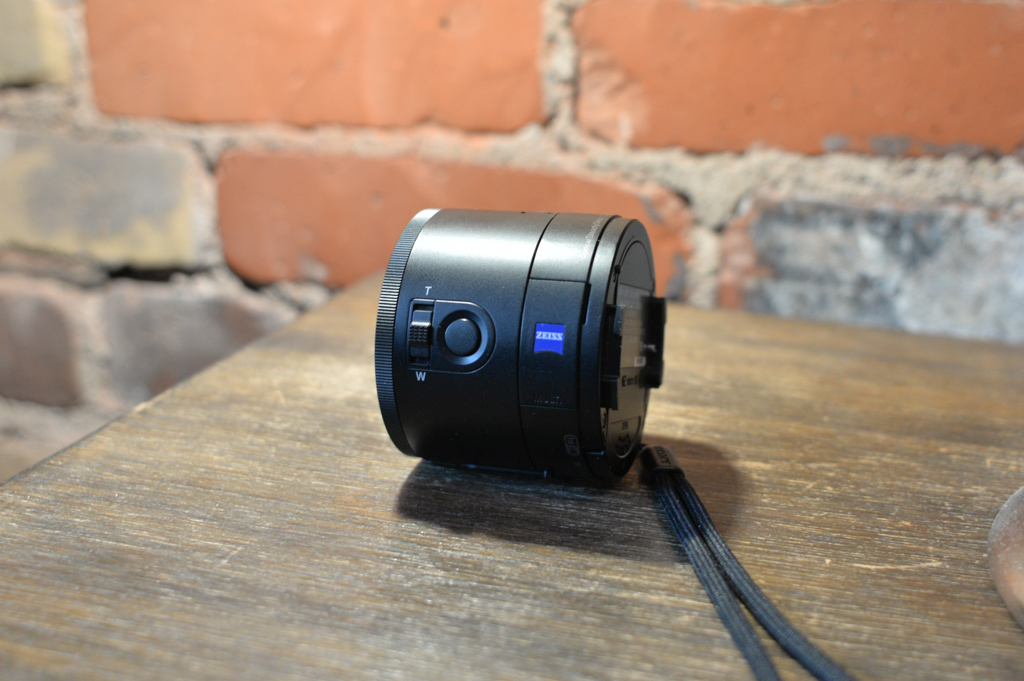 Therefore the camera’s success would hinge on Sony’s ability to substitute a viewfinder for a smartphone screen – and for the most part, it works. After updating the device to firmware version 3.0, which improves pairing speed and adds a native half-press to focus on the camera’s side shutter button, I turned it on and entered the iOS PlayMemories app. The first issue presented itself, and would continue to be a factor throughout my use of the QX100: users must manually connect to the camera’s local WiFi network if already connected to another hotspot.
Therefore the camera’s success would hinge on Sony’s ability to substitute a viewfinder for a smartphone screen – and for the most part, it works. After updating the device to firmware version 3.0, which improves pairing speed and adds a native half-press to focus on the camera’s side shutter button, I turned it on and entered the iOS PlayMemories app. The first issue presented itself, and would continue to be a factor throughout my use of the QX100: users must manually connect to the camera’s local WiFi network if already connected to another hotspot.
Upon first connection, the camera requires a password, which can be found in the box; Android users with NFC-enabled smartphones can avoid this burden by pairing the two with the built-in tag, but I found that it didn’t save much time. Once connected, opening the app brings up the live viewfinder, along with shooting options and a host of settings.
On newer devices like the HTC One M8 and iPhone 5s, the connection was typically flawless; the viewfinder updated in real time, and photo-taking was practically instant. By default, the 20MP camera copies a 2MP version of each photo – stored locally using a microSD card – to the device. To minimize transfer time, users don’t have a choice of copying the full-sized photo after each snap, but can do so later in bulk (which presents its own issues).
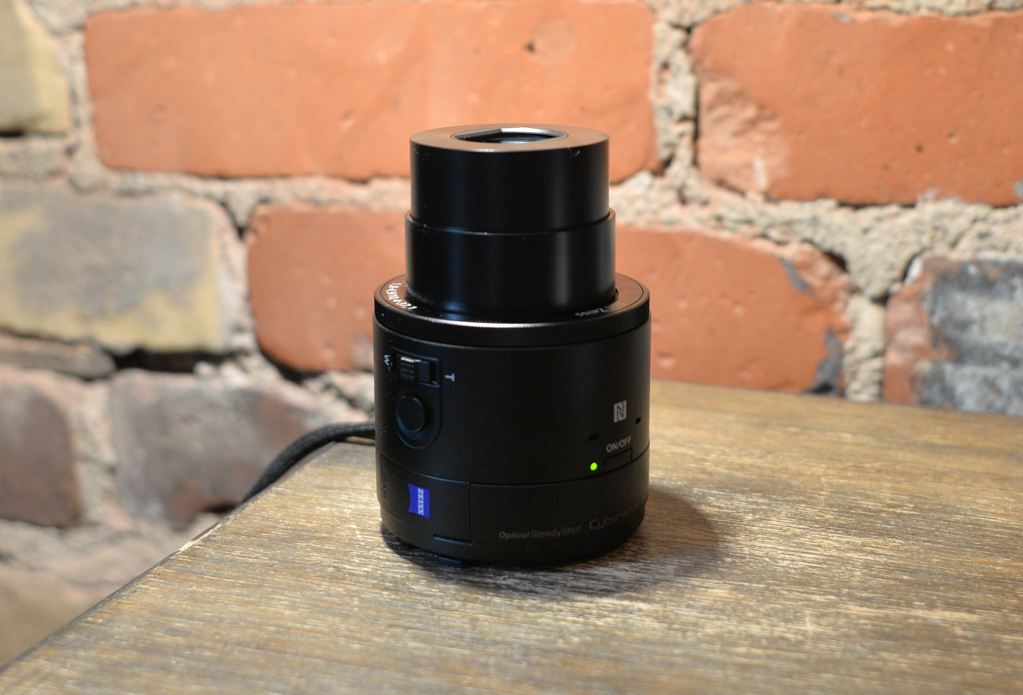 When stationary, or walking slowly, the viewfinder has no issues keeping up; try taking a photo in a train or a moving car, however, and the WiFi’s limited bandwidth is overwhelmed and the picture grinds to a halt. Herein lies one of the major issues with the QX100: solely relying on the smartphone as its eyes, users are subject to the inherent limitations of wireless connectivity. While WiFi Direct has a theoretical maximum speed of 300Mbps, in practice there are many environmental factors, including abundant interference, that negatively affects performance.
When stationary, or walking slowly, the viewfinder has no issues keeping up; try taking a photo in a train or a moving car, however, and the WiFi’s limited bandwidth is overwhelmed and the picture grinds to a halt. Herein lies one of the major issues with the QX100: solely relying on the smartphone as its eyes, users are subject to the inherent limitations of wireless connectivity. While WiFi Direct has a theoretical maximum speed of 300Mbps, in practice there are many environmental factors, including abundant interference, that negatively affects performance.
It is possible to take photos without connected to a smartphone, and with a little practice I found myself quite adept at handling the QX100 independently. In situations where I needed two hands – a usability concern that I’ll return to later – I trained myself to correctly orient the lens and zoom depending on the landscape.
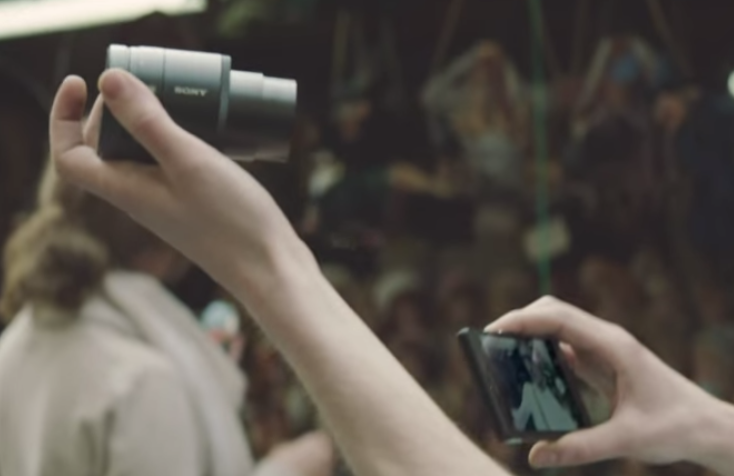
The good thing is that the QX100, even without a native viewfinder, is a fully-capable digital camera. Its body sports a two-step shutter button and guides for zooming; it also has a manual focus ring on the edge of the motorized lens. Obviously, photos taken when disconnected from a smartphone will only be transferrable later on using the PlayMemories bulk copying feature – or copied to a computer using a microSD-to-SD adapter — but being able to review each photo first before copying obviates the need for blind faith.
The QX100’s strength, when paired with a smartphone, is not, as Sony would like you to believe, the ability to imitate the device’s camera by using the adjustable clip attachment found in the box. After trying it once, I put the plastic gimmick aside and opted for two-handed operation, with my phone in my left paw and the QX100 in my right.
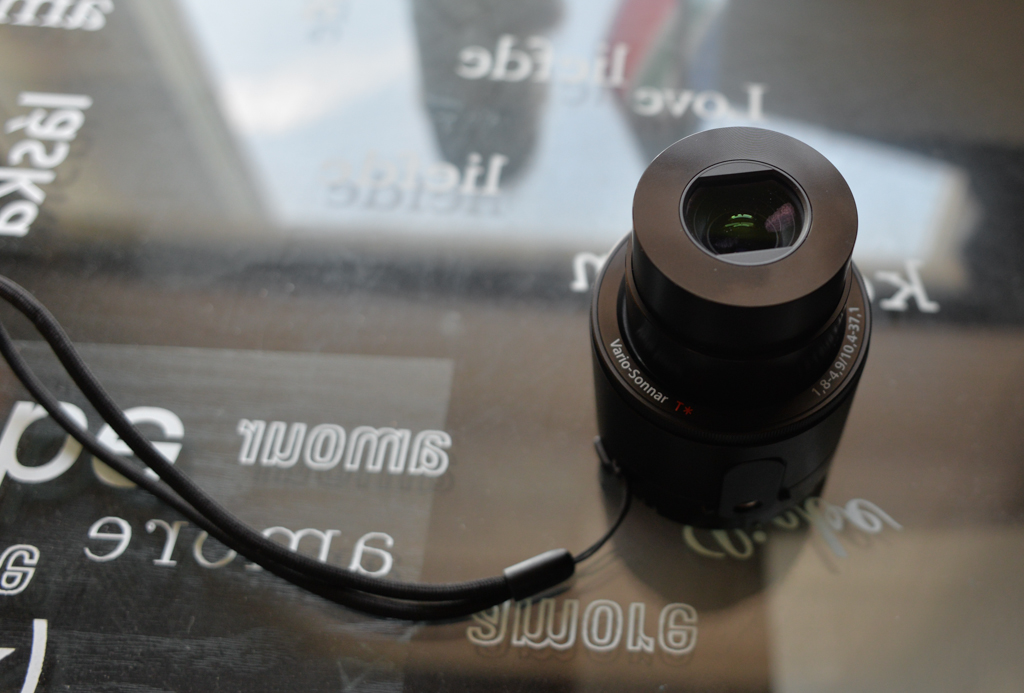 While the PlayMemories interface lacks the explicit Manual mode found on proper DSLRs and many mirrorless cameras, Sony has packed enough alternatives to satiate the “set-it-and-forget-it” Auto Mode fan and, on the other side of the spectrum, the staunch tweaker.
While the PlayMemories interface lacks the explicit Manual mode found on proper DSLRs and many mirrorless cameras, Sony has packed enough alternatives to satiate the “set-it-and-forget-it” Auto Mode fan and, on the other side of the spectrum, the staunch tweaker.
On the former side, Sony confusingly offers two “novice” modes, Superior Auto+ and Intelligent Auto. While Superior Auto+ is the more versatile of the two — it detects exposure, subject distance, and more to automatically engage HDR or macro mode — the differences are not properly spelled out for the average user. Intelligent Auto is just that: a plain auto mode that is suitable for most users. I’d leave that one alone and, when unsure of what manual settings to use, stick with Superior Auto+. The HDR mode, which quickly takes three photos in succession and combines the exposures for improved dynamic range, is not user-configurable, but it does considerably minimize the impact of backlit shots.
On the other side, the QX100 allows for separate Shutter and Aperture Priority modes, along Program with a more configurable Program mode. Once toggled, changes to shutter speed and aperture was near-instant, and allowed for some pretty remarkable photos.
Indeed, the QX100 quickly proved itself one of the most versatile cameras I’ve ever used. While the maximum focal length was considerably shorter than most mid-range zoom lenses found on DSLRs and mirrorless cameras, I found the optical range to be satisfactory for the majority of use cases. At F1.8, the QX100 produces some fine bokeh, with some true depth of field that companies like Google, HTC, Samsung and Sony are only able to do in software on their smartphones.
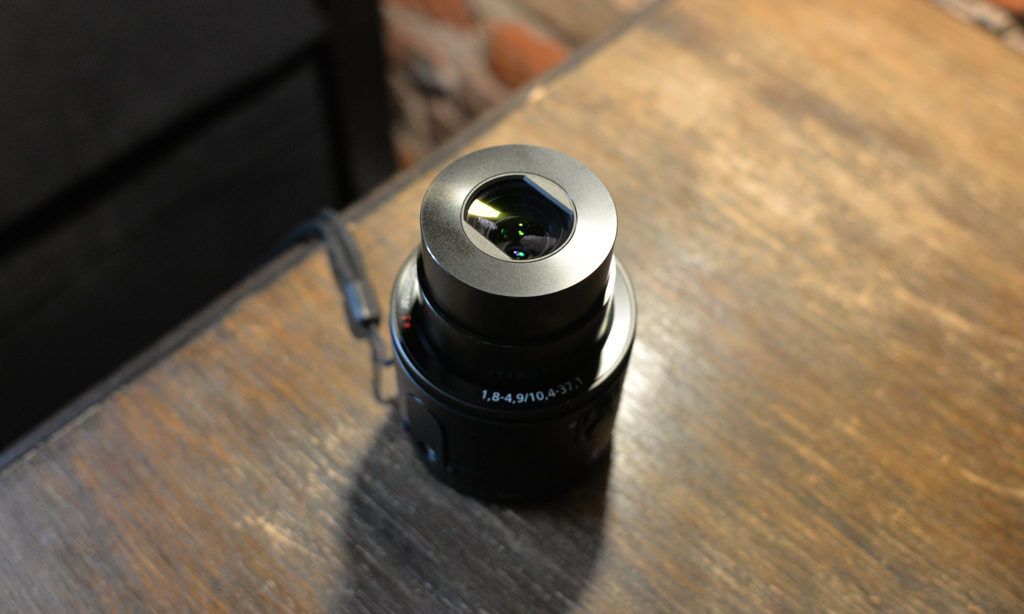 The real reason I loved using the QX100 was that it performed brilliantly both as a standalone camera and a smartphone camera replacement. Because by default it transfers 2MP shots to your smartphone, these can be used for social media sharing and, even at lower resolution, retain the primary qualities of its sharp lens and large sensor.
The real reason I loved using the QX100 was that it performed brilliantly both as a standalone camera and a smartphone camera replacement. Because by default it transfers 2MP shots to your smartphone, these can be used for social media sharing and, even at lower resolution, retain the primary qualities of its sharp lens and large sensor.
The QX100 is not for everyone, but I’ve found my dream travel lens. Its transfer speed issues are obvious, and will be difficult to overcome without switching over to a faster form of WiFi — perhaps 802.11ac — but fundamentally, you’re getting an $800 camera for $500, along with all the flexibility its small stature affords. Occasionally, when the device stalled when reconnecting to my smartphone, I grew frustrated and longed for the reliability of my NEX-5R, but closing and reopening the PlayMemories app usually solved the problem, and alleviated my stress. These are software issues, and Sony has already proven its mettle by solving many of the camera’s outstanding connectivity issues in two major updates.
The device, like all PlayMemories-capable Sony cameras, is compatible with all Android and iOS devices, though performance will obviously be better on newer phones and tablets.
Highly Recommended
MobileSyrup may earn a commission from purchases made via our links, which helps fund the journalism we provide free on our website. These links do not influence our editorial content. Support us here.


